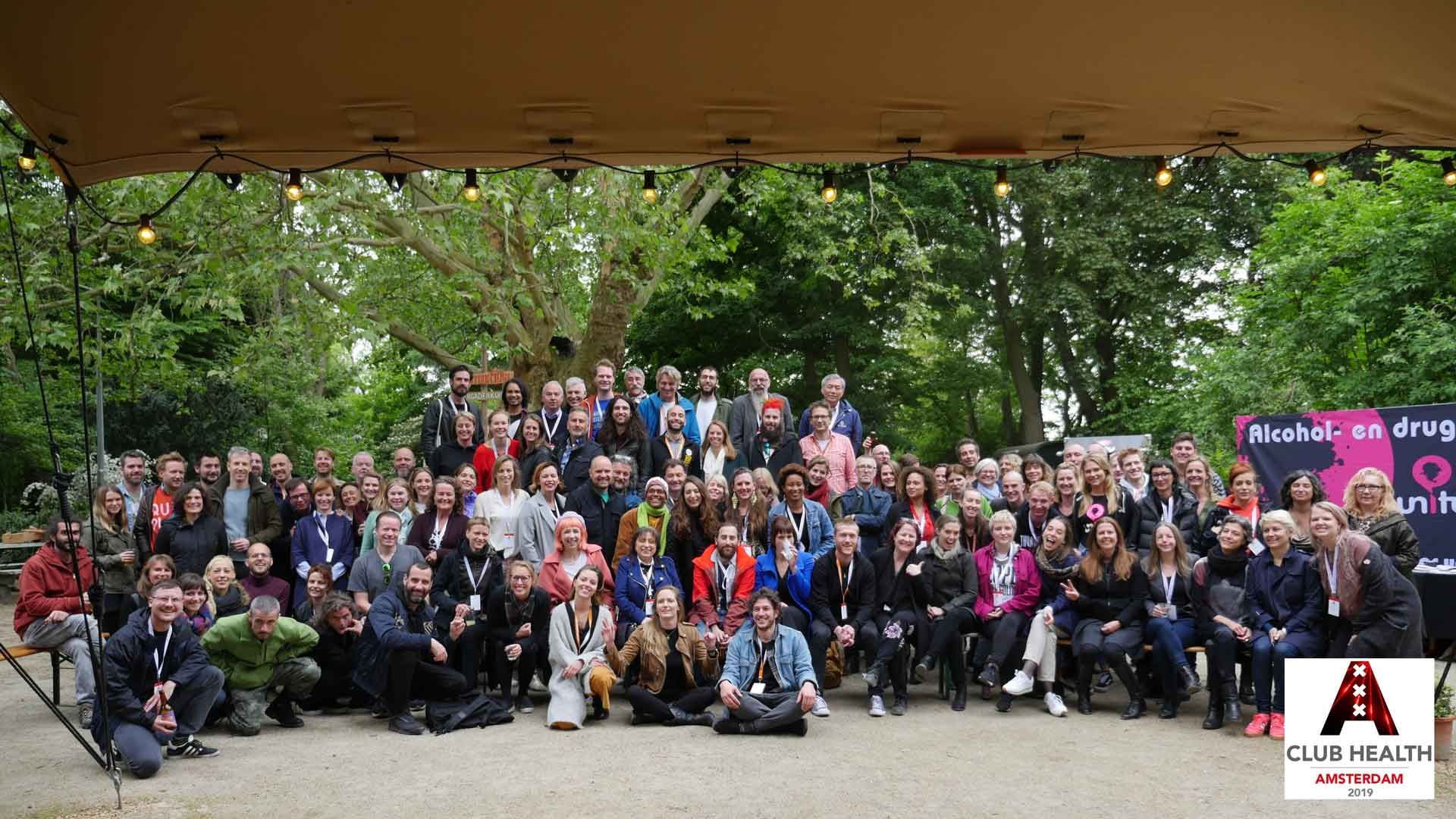Keeping ravers safe: a personal account of Club Health Amsterdam 2019

During the 11th edition of Club Health, experts from all over the world came together in Amsterdam to learn how to protect the wellbeing of people in nightlife settings.
It was a sunny Wednesday when delegates, coming from 25 different countries and 5 different continents, started arriving at the EYE film museum in Amsterdam. The white modernistic building, nicknamed EYEcatcher, was reflecting sunlight so brightly that it was almost hard to look at. Though a chilling breeze reminded the visitors that the festival season still hadn’t really set in yet.
Hundreds of experts from all over the world came together to talk about how to keep people safe, happy and healthy in nightlife settings. From doctors, to alcohol and drug practitioners, researchers, government officials, journalists, activists and nightlife entrepreneurs, all seemed eager to learn more about the field of harm-reduction.
In the early afternoon, health-care professionals Floor van Bakkum and Judith van Noijen kicked-off the three-day event. They showed a video that explained that possession of drugs is illegal in the Netherlands, but using drugs is not. “So if you feel ill, people will offer help.”
“People are curious and they will take risks”, the Deputy Major of the City of Amsterdam, Simone Kukenheim, explained. She believes that only by monitoring drug use and incidents, we can improve our education programs. Kukenheim asserted that she doesn’t see the nightlife as purely a risk; parties are important social gatherings. “It is where creative people come together, looking for solutions.”
Maybe that’s why an evening boat ride was included in the conference. So creative nightlife professionals could come together, to learn from each other, and improve nightlife settings all over the world.
In the evening, attendees could visit the drug testing facility at the GGD Amsterdam, to see for themselves how the most advanced drug testing system in the world, DIMS, works in practice. Another small group of people went to one of Amsterdam’s most famous coffeeshop, to see how cannabis is regulated and sold in this progressive capital.
The next morning, psychologist Gjalt-Jorn Peters explained what steps people take before they make a decision. If we understand this process well, he argued, we can stimulate people to make healthy choices. Governments would be wise to study these models, so they can increase healthy behaviour.
There wasn’t much time to contemplate the ways of how we can stimulate healthy behaviours though. The second plenary speaker, Gerard Hastings, continued to explain how corporations systematically try to change our behaviours as well. Corporations want to sell products and to reach this goal, they are influencing peoples’ minds. In their desire to maximise profits, companies often behave like a psychopath, Hastings explained. They will lie, cheat, exploit, manipulate, and when they are confronted with all this antisocial behaviour, they use a great deal of charm to convince you otherwise.
Luckily, not all organizations prove to be that evil. Some of them actively try to keep others safe, without making a profit. Take The Loop, a non-profit organization from the UK, which offers free drug tests to drug users, so they can be warned when their pill proves to be especially dangerous. The director of The Loop, Fiona Measham, joined a discussion about pill testing with colleagues from the Netherlands, Luxembourg, France, Portugal and Australia. During the debate, difficult questions were being answered. ‘Should you share all testing results publicly?’ Or will this lead to users misinterpreting the results, which could lead to people falsely identifying a pill? The experts didn’t fully agree on what is the best strategy.
Though the point of the debate probably wasn’t really to reach consensus. The experts came together to learn more about how all professionals from nightlife industries can work together with government officials, to improve policies, and to decrease the amount of health incidents.
A famous example of a nightlife venue trying to improve the health of its visitors is the London club Fabric, which has its own impressive medical facility. It makes the club “the safest place to take drugs”, as lawyer Philip Kolvin put it. Were it not for the fact that taking drugs inside the club is strictly prohibited and will likely result in prosecution.
During the last day of the conference, attendees, as usual, had to make tough choices. Should you have gone to the presentations about managing nighttime environments, would you rather have learned how to prepare for possible crises at large-scale events, would you rather have attended presentations on how to prevent drug overdoses, or had it been best to listen to online developments in the harm-reduction field? Whatever choice you made, there were always plenty of presentations you had to miss.
Perhaps attending every presentation during the conference was not the point. Maybe meeting other people from all over the world, who face partly the same problems, was closer to the essence of this conference.
A number of conference delegates were shown one of the busiest nightlife areas in Amsterdam, to see for themselves how you can implement new measures, and manage all challenges that one might endure when large groups of people go out to have a good time.
After three days of intensive talks, lessons and discussions, the several hundred attendees went back to their homes across the world. Hopefully, they return with renewed inspiration to improve their field of work and promote and protect the health of all nightlife participants.
Tom Kiel is a freelance journalist in the Netherlands
- Hits: 2450
